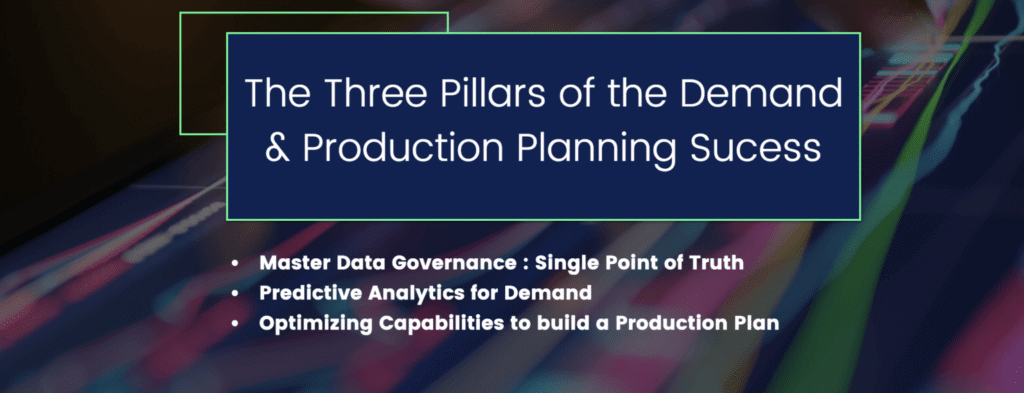
There are three pillars that I would like to mention that must exist in a solution, so it is useful, easy and quick to use.
Pillar 1: Data Governance. We saw too many solutions implementations, where all the solutions fail due to data. This is completely understandable, as data for analytic purposes comes from different sources, and to keep that integration up and going is not always easy. So, if the solution has a customizable structure where you are able to quickly load data weekly, bringing together the actuals of your sales, your inventory, your SKU´s BOM´s and your process capacities with any suggested labor schedules, all of them in the same place, you will have a third of your way accomplished. You can find that service in a cloud-based service solution.
With all these data, plus the functionality of been able to include new products with no actuals, you will be able to do a great planning, both for demand and for production, but let’s go to the following pillar.
Pillar 2: Demand Planning functionality. Now let’s forecast! What does these mean? Let some statistical model project what our sales will be like in the near future. Here your tool must use the data you have loaded and run, according to different segmentations, predictive analysis. To have an accurate prediction, data segmentation is important. So, the solution needs to be able to find by itself which are the best segmentations we need to run. A predictive tool, where we can play with groups, detect outliers and adjust our predicted groups to market behavior, having a good platform where to add new products and work with market expected uplifts or down lifts. These functionalities allow you to prepare for different possible demand scenarios and check their trends in the integrated dashboard.
Once we have different demand plans and forecasts, we move towards pillar 3,
Pillar 3: Production Planning. This is a set of functionalities put together so the user can have both have a rough-cut capacity analysis as well as a short plan term plan with an optimized sequence. The tool must emphasizes on the production capacities and plan sequence, to propose a production plan that avoids stock-outs and keep a high turnover rate of inventory.
The demand plan should be the input, you should be able to choose which one to use, and input the constrains of each scenario you will like to run.
In this way, you will have an helpful tool, to use monthly and be sure confident on the success of your planning!
